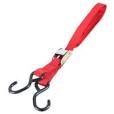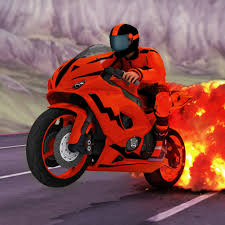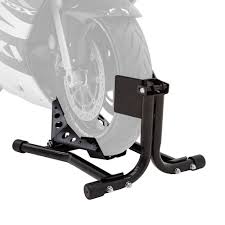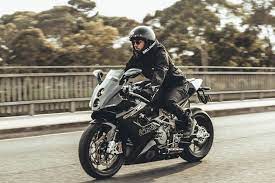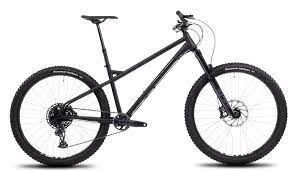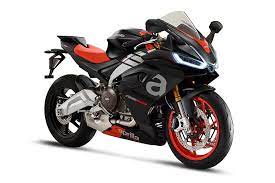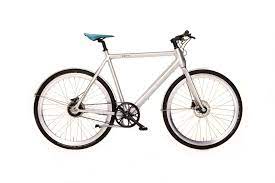
Bike: The Timeless Joy of Two-Wheeled Freedom
From childhood memories of carefree rides to the practicality and eco-friendliness of commuting, bikes have always held a special place in our hearts. Whether it’s the exhilarating rush of wind against our face or the sense of freedom as we pedal through open roads, bikes offer an experience unlike any other mode of transportation.
The humble bike has come a long way since its inception. Evolving from its early designs to the sleek and efficient machines we see today, bikes have become a symbol of sustainability and healthy living. With concerns about climate change and rising pollution levels, more people are turning to bikes as a viable alternative to cars and public transport.
One of the greatest joys of riding a bike lies in its simplicity. It’s an activity that transcends age, gender, and social status. From children learning how to balance on their first tiny bicycles to adults rediscovering the joy of cycling later in life, bikes have a universal appeal that brings people together.
Beyond its recreational benefits, biking also offers numerous health advantages. Regular cycling can improve cardiovascular fitness, strengthen muscles, and enhance overall well-being. It provides an opportunity to escape the confines of indoor spaces and immerse oneself in nature’s beauty while reaping physical benefits.
Moreover, bikes contribute positively to urban environments by reducing traffic congestion and improving air quality. With dedicated bike lanes becoming more common in cities around the world, commuting by bike has become safer and more convenient than ever before. It’s not just about personal health; it’s about creating sustainable communities for future generations.
Bikes also have a significant impact on our mental well-being. Cycling allows us to disconnect from the stresses of daily life and reconnect with ourselves. The rhythmic pedaling motion can be meditative, providing clarity and a sense of calmness amidst chaotic schedules.
Additionally, biking is an excellent way to explore new places and discover hidden gems. Whether it’s a leisurely ride through picturesque countryside or an adventurous mountain biking expedition, bikes offer the freedom to venture off the beaten path and create unforgettable memories.
In recent years, the cycling community has grown exponentially, with enthusiasts forming tight-knit groups and participating in organized rides and events. This sense of camaraderie fosters a supportive environment where riders can share their passion, exchange tips, and motivate each other to push their limits.
As we embrace a more sustainable future, bikes continue to play an essential role in shaping our cities and lifestyles. They offer a solution to many of the challenges we face today – from reducing carbon emissions to promoting healthier living. Bikes are not just a means of transportation; they represent freedom, adventure, and a connection to the world around us.
So let’s dust off those handlebars, strap on our helmets, and embark on an exciting journey – one that celebrates the timeless joy of two-wheeled freedom. Whether you’re commuting to work or embarking on an epic cross-country adventure, let your bike be your trusted companion as you pedal towards a brighter future.
9 Reasons Why Biking is a Fantastic Choice in the UK
- Great for the environment – no emissions or pollution.
- Low cost – bikes are much cheaper than cars and other forms of transport.
- Increases fitness levels – cycling is a great form of exercise, helping to keep you healthy and fit.
- Easy to maintain – bikes require minimal maintenance compared to cars and other vehicles.
- Quicker than walking – so you can get from A to B faster!
- Fun and enjoyable way of getting around – perfect for leisurely rides in the countryside or city sightseeing tours!
- Convenient storage – bikes can easily be stored away in a shed, garage or even indoors when not in use
- Versatile – with different types of bike available, such as mountain bikes, road bikes and electric bikes, there’s something for everyone!
- Easily accessible – most cities now have dedicated cycle lanes which make it easier and safer for cyclists to get around town
6 Cons of Biking: A Closer Look at Road Safety, Weather Conditions, Maintenance Costs, Theft, Limited Carrying Capacity, and Physical Effort
- Road safety – Bikes can be difficult to see in traffic, and cyclists are more at risk of accidents than drivers of other vehicles.
- Weather conditions – Cycling in poor weather can be unpleasant and dangerous, especially when roads are wet or icy.
- Maintenance costs – Bikes require regular maintenance to stay safe and running efficiently, which can add up over time.
- Theft – Bicycles are easy targets for thieves, so they must be securely locked when not in use.
- Limited carrying capacity – Bikes have limited carrying capacity compared to cars, making it difficult to transport large items or multiple passengers at once.
- Physical effort required – Cycling requires physical effort and fitness levels may limit how far you can travel on a bike compared to other forms of transport such as a car or bus journey
Great for the environment – no emissions or pollution.
In a world grappling with the challenges of climate change and environmental degradation, bikes emerge as a shining example of sustainable transportation. Unlike cars and other motorized vehicles that contribute to air pollution and greenhouse gas emissions, bikes offer a clean and eco-friendly alternative.
One of the most significant advantages of bikes is their zero-emission nature. They operate solely on human power, requiring no fossil fuels or electricity to propel them forward. This absence of emissions means that biking has a minimal carbon footprint, making it an excellent choice for those looking to reduce their impact on the environment.
By choosing to ride a bike instead of driving a car, you are actively contributing to cleaner air quality. Vehicles emit pollutants such as carbon monoxide, nitrogen oxides, and particulate matter that have detrimental effects on our health and the environment. Bikes produce none of these harmful substances, helping to improve air quality in our communities.
Additionally, bikes play a crucial role in reducing traffic congestion. With fewer cars on the road, especially during peak hours, traffic flow improves significantly. This reduction in congestion not only saves time but also reduces fuel consumption and associated emissions from idling vehicles.
The positive environmental impact of biking extends beyond individual benefits. When more people choose bikes over cars for short-distance trips or daily commuting, there is a cumulative effect on reducing emissions at a larger scale. It creates a ripple effect that can lead to cleaner cities and healthier environments for everyone.
Furthermore, embracing biking as a mode of transportation aligns with broader sustainability goals. Governments and urban planners are increasingly recognizing the importance of investing in cycling infrastructure such as bike lanes and dedicated paths. These initiatives encourage more people to choose bikes as their preferred mode of transport, further promoting sustainable living practices.
Biking also offers an opportunity for individuals to connect with nature and appreciate their surroundings while minimizing their impact on delicate ecosystems. Whether it’s cycling through urban parks or exploring scenic countryside routes, bikes allow us to enjoy the beauty of the natural world without leaving a trace of pollution behind.
In conclusion, the environmental benefits of biking are undeniable. By opting to ride a bike, you are not only improving your own health and well-being but also actively contributing to a cleaner, greener planet. Embrace the power of pedal and be part of the solution – let’s choose bikes as our sustainable means of transportation and pave the way towards a brighter future for generations to come.
Low Cost: Embracing the Affordability of Bicycles
In a world where expenses seem to be ever-increasing, finding cost-effective alternatives for transportation has become a necessity. This is where bicycles shine, offering an affordable and practical solution to get from point A to point B.
Compared to cars and other forms of transport, bikes are significantly cheaper in terms of both upfront costs and ongoing expenses. When purchasing a bicycle, you’ll find that it comes with a much smaller price tag compared to investing in a car or even relying on public transportation.
Not only are bikes cheaper to buy initially, but they also require minimal maintenance. With fewer moving parts and simpler mechanisms, the cost of repairs and servicing is substantially lower than that of automobiles. Basic maintenance tasks such as inflating tires or lubricating chains can be easily done at home with minimal expense.
Moreover, bikes do not rely on expensive fuels like petrol or diesel. Instead, they run on human power – the most sustainable energy source available! This means you won’t have to worry about fluctuating fuel prices or spending large sums on filling up your tank. By opting for a bike as your primary mode of transport, you can save money while reducing your carbon footprint.
Another financial advantage of using bikes is the absence of parking fees. Finding parking spaces in crowded cities can be an expensive and time-consuming affair. With a bicycle, all you need is a sturdy lock and any suitable bike rack or post becomes your parking spot – free of charge!
Furthermore, bikes offer long-term savings by promoting good health. Regular cycling improves cardiovascular fitness and boosts overall well-being. As a result, cyclists may experience reduced medical expenses associated with sedentary lifestyles such as obesity-related diseases or stress-related conditions.
For those who live in urban areas with heavy traffic congestion, cycling can actually save time as well as money. Bikes are nimble and can maneuver through gridlocked streets, avoiding long queues of cars. Commuting on a bike can be faster than sitting in traffic, allowing you to arrive at your destination more efficiently.
In summary, the low cost of bicycles makes them an attractive option for individuals seeking affordable and sustainable transportation. With minimal upfront investment, reduced maintenance expenses, and the absence of fuel costs or parking fees, bikes offer a financially viable alternative to cars and other forms of transport. By embracing the affordability of bicycles, we not only save money but also contribute to a greener and healthier future for ourselves and the planet.
Increases Fitness Levels: Cycling, the Path to Health and Fitness
Cycling is more than just a means of transportation; it’s a fantastic form of exercise that can significantly improve your fitness levels. Whether you’re a seasoned cyclist or just starting out, hopping on a bike regularly can do wonders for your overall health and well-being.
One of the key benefits of cycling is its ability to boost cardiovascular fitness. As you pedal away, your heart rate increases, pumping oxygen-rich blood throughout your body. This aerobic exercise strengthens your heart, improves lung capacity, and enhances overall cardiovascular health. Regular cycling can lower the risk of heart disease, stroke, and high blood pressure.
Not only does cycling benefit your heart and lungs, but it also helps build strength and endurance in various muscle groups. Pedaling engages the quadriceps, hamstrings, calves, and glutes, providing an excellent workout for your lower body. Additionally, maintaining balance on a bike activates core muscles, contributing to improved stability and posture.
One of the great things about cycling is its versatility. Whether you prefer leisurely rides through scenic routes or intense uphill challenges, you can tailor your cycling routine to suit your fitness goals. You can gradually increase the intensity by tackling steeper terrains or incorporating interval training into your rides.
Furthermore, cycling is a low-impact exercise that puts less strain on joints compared to activities like running or high-impact aerobics. This makes it an ideal choice for individuals with joint issues or those recovering from injuries. Cycling allows you to get moving without putting excessive stress on vulnerable areas such as knees or ankles.
Apart from physical benefits, cycling also has positive effects on mental well-being. Engaging in regular exercise releases endorphins – known as “feel-good” hormones – which help reduce stress levels and boost mood. Cycling outdoors provides an opportunity to connect with nature and enjoy the beauty of your surroundings while clearing your mind from daily worries.
Another advantage of cycling is its accessibility. Unlike other sports or fitness activities that require specialized equipment or memberships, cycling can be enjoyed by people of all ages and fitness levels. All you need is a bike, a helmet, and a willingness to pedal. It’s an activity that can be easily incorporated into your daily routine, whether it’s commuting to work or taking leisurely rides on weekends.
So, if you’re looking for an enjoyable way to improve your fitness levels and overall health, hop on a bike and start pedaling. Embrace the freedom and exhilaration that cycling brings while reaping the countless benefits it offers. Remember to stay safe by wearing appropriate protective gear and following road rules.
With each ride, you’ll not only strengthen your body but also nurture a lifelong love for this wonderful form of exercise. So grab your helmet, hit the road, and let cycling take you on a journey towards better health and fitness.
Easy to maintain – bikes require minimal maintenance compared to cars and other vehicles.
Easy to Maintain: Embrace the Simplicity of Bike Ownership
When it comes to vehicle maintenance, bikes offer a refreshing change of pace. Unlike cars and other motorized vehicles that often require frequent trips to the mechanic and costly repairs, bikes are remarkably easy to maintain. With just a few simple steps, you can keep your bike in top shape and enjoy hassle-free rides for years to come.
One of the greatest advantages of bike ownership is its minimal maintenance requirements. Unlike cars with their complex engines and intricate systems, bikes have a straightforward design that lends itself to easy upkeep. With fewer moving parts and no need for oil changes or fuel refills, maintaining a bike becomes a breeze.
Regular maintenance tasks for bikes typically include checking tire pressure, lubricating the chain, and ensuring proper brake functionality. These simple tasks can be easily performed at home with basic tools and minimal technical knowledge. In fact, many bike enthusiasts find pleasure in taking care of their own bicycles, as it allows them to develop a deeper connection with their two-wheeled companion.
Not only does bike maintenance save you time and money, but it also empowers you with a sense of self-sufficiency. By learning how to perform basic repairs and adjustments yourself, you become more independent as a cyclist. This newfound knowledge not only enhances your riding experience but also provides peace of mind knowing that you have the skills to handle minor issues on the road.
Furthermore, the simplicity of bike maintenance extends beyond just mechanical aspects. Bikes are typically made from durable materials that withstand various weather conditions without significant wear or tear. This means less time spent on cleaning and polishing compared to cars that require regular washing and waxing.
In addition to being easy on your wallet, maintaining a bike has environmental benefits as well. By reducing your reliance on motorized vehicles that contribute to pollution, you actively participate in creating cleaner air for everyone. Bikes are inherently eco-friendly transportation options, and their low maintenance requirements further contribute to a sustainable lifestyle.
So, whether you’re a seasoned cyclist or just starting out on your biking journey, embrace the simplicity of bike ownership. Enjoy the freedom of minimal maintenance, knowing that you can keep your bike in excellent condition with basic care. Experience the joy of pedaling through open roads without the worry of complex repairs or hefty bills.
With bikes, it’s not just about getting from point A to point B; it’s about embracing a lifestyle that celebrates simplicity, self-sufficiency, and environmental consciousness. So hop on your bike and discover the ease and satisfaction that comes with owning a vehicle that requires minimal maintenance.
Quicker than walking – so you can get from A to B faster!
When it comes to getting around, time is of the essence. That’s where bikes come in, offering a fantastic advantage over walking – speed. Biking allows you to zip through streets and reach your destination faster than if you were on foot.
Compared to walking, cycling offers a significant increase in speed without sacrificing efficiency. With every pedal stroke, you cover more ground and make progress towards your desired location. Whether it’s commuting to work, running errands, or simply exploring the city, biking gives you the ability to arrive at your destination in a shorter amount of time.
This increased speed not only saves precious minutes but also provides greater flexibility in planning your day. With a bike, you can fit more activities into your schedule without worrying about long travel times on foot. It opens up opportunities for spontaneous adventures and allows you to make the most of your time.
Furthermore, biking offers a solution for those who live in densely populated areas or face congested traffic during peak hours. Instead of being stuck in gridlock or relying on public transport schedules, hopping on a bike allows you to bypass traffic jams and take alternative routes. You have the freedom to navigate through narrow streets and explore shortcuts that cars simply cannot access.
In addition to being quicker than walking, cycling also provides health benefits that go hand in hand with saving time. Engaging in regular physical activity like biking contributes to improved cardiovascular fitness and overall well-being. By choosing the bike over other modes of transportation, you can combine efficiency with exercise – making each journey not just faster but also healthier.
So next time you find yourself needing to get from point A to point B swiftly, consider grabbing your trusty bike. Enjoy the breeze against your face as you pedal away towards your destination with ease and efficiency. Embrace the joy of moving faster than walking and experience the many advantages that biking brings to your daily life.
Fun and enjoyable way of getting around – perfect for leisurely rides in the countryside or city sightseeing tours!
Fun and Enjoyable: Bike, the Perfect Companion for Leisurely Rides
When it comes to getting around, there’s nothing quite like the joy and excitement of hopping on a bike. Whether you’re exploring the picturesque countryside or taking in the sights of a bustling city, biking offers a fun and enjoyable way to experience your surroundings.
One of the greatest advantages of biking is the sheer pleasure it brings. The wind in your hair, the feeling of freedom as you pedal, and the sense of adventure that accompanies every ride – these are just some of the reasons why biking is loved by people of all ages.
For those seeking an escape from their daily routines, bikes provide an excellent opportunity to immerse oneself in nature’s beauty. Picture yourself gliding along quiet country roads, surrounded by rolling hills and lush green landscapes. The gentle breeze on your face and the rhythmic motion of pedaling create a serene atmosphere that rejuvenates both body and mind.
But it’s not just rural areas that benefit from leisurely bike rides. Cities too offer unique experiences for cyclists. Imagine cruising through vibrant streets, passing iconic landmarks, and discovering hidden gems that are often missed when zooming by in a car or bus. Biking allows you to truly soak in the atmosphere, stopping whenever something catches your eye or capturing breathtaking views with your camera.
Leisurely rides on bikes also provide an opportunity for quality time with loved ones or friends. Whether you’re cycling side by side through scenic routes or embarking on city sightseeing tours together, these shared experiences create lasting memories and strengthen bonds.
Moreover, biking at a relaxed pace allows you to fully engage with your surroundings. You can stop at charming cafes along the way for a quick refreshment or explore quaint towns that would otherwise be missed when traveling at faster speeds. It’s about embracing spontaneity and savoring each moment without being confined by strict schedules.
Biking is not just a means of transportation; it’s a gateway to adventure and exploration. It encourages us to slow down, appreciate the beauty around us, and enjoy the simple pleasures in life. Whether you’re seeking tranquility in nature or the vibrant energy of city streets, bikes provide the perfect mode of transport for leisurely rides.
So grab your bike, map out your route, and embark on a journey of discovery. Whether you’re seeking solitude or sharing laughter with friends, biking offers an unparalleled experience that combines physical activity, enjoyment, and a deep connection with your surroundings.
Let the wheels spin and let yourself be carried away by the fun and enjoyment that biking brings – whether it’s through picturesque countryside or exploring the vibrant heart of a city. Your bike awaits, ready to be your trusted companion on unforgettable leisurely rides.
Convenient storage – bikes can easily be stored away in a shed, garage or even indoors when not in use
Convenient Storage: The Bike’s Secret Superpower
One of the many advantages of owning a bike lies in its convenient storage capabilities. Unlike cars or other large vehicles, bikes can be easily tucked away in a shed, garage, or even indoors when not in use. This ability to store bikes effortlessly adds to their practicality and versatility.
Imagine coming home after a satisfying ride through the neighborhood or a thrilling adventure on the trails. With a bike, there’s no need to worry about finding parking spaces or paying for expensive storage facilities. Simply wheel it into your shed or garage and rest easy knowing your trusty steed is safe and secure.
For those living in urban areas with limited outdoor space, storing bikes indoors becomes an excellent solution. With their compact size and lightweight frames, bikes can fit snugly into corners or hang neatly on specially designed wall mounts. This not only saves valuable space but also adds a touch of style to your living environment.
Moreover, storing bikes indoors helps protect them from harsh weather conditions that can cause rust or damage over time. By keeping them sheltered from rain, snow, and extreme temperatures, you ensure that your bike remains in top condition for longer periods.
Convenience extends beyond just storage; it also applies to accessibility. When bikes are stored nearby, they become easily accessible for impromptu rides or quick errands. No more searching for car keys or waiting for public transport – simply hop on your bike and go!
Furthermore, having bikes stored close at hand encourages regular use and promotes an active lifestyle. When you see your bike every day as you pass by the garage or shed, it serves as a constant reminder to get outside and enjoy the freedom of cycling.
Whether you’re an avid cyclist with multiple bikes or someone who enjoys occasional rides around town, convenient storage is a pro that cannot be overlooked. It simplifies our lives by providing hassle-free solutions for keeping our beloved two-wheeled companions safe and ready for action.
So, embrace the convenience of bike storage and make the most of your cycling experience. Let your bike be a true companion that is always within reach, waiting to whisk you away on new adventures or simply provide a refreshing ride through familiar streets. With easy storage options, bikes become more than just a means of transportation – they become an integral part of our daily lives.
Versatile – with different types of bike available, such as mountain bikes, road bikes and electric bikes, there’s something for everyone!
Versatile – Find Your Perfect Ride with Different Types of Bikes
When it comes to bikes, one of their greatest advantages is their versatility. With a wide range of options available, including mountain bikes, road bikes, and electric bikes, there truly is something for everyone. Whether you’re an adrenaline junkie seeking off-road adventures or a city dweller looking for a convenient and eco-friendly mode of transportation, there’s a bike out there that suits your needs perfectly.
For those who crave excitement and the thrill of exploring rugged terrains, mountain bikes are the ideal choice. Designed with sturdy frames, wide tires, and advanced suspension systems, these bikes can handle rough trails and steep slopes with ease. Whether you’re tackling rocky paths or navigating through dense forests, a mountain bike will be your trusty companion on any off-road adventure.
On the other hand, road bikes are built for speed and efficiency on paved surfaces. With lightweight frames and narrow tires designed for minimal rolling resistance, these sleek machines allow riders to glide effortlessly along roads and cycle paths. Road bikes are perfect for fitness enthusiasts aiming to improve their cardiovascular endurance or those who simply enjoy the exhilaration of swift rides.
In recent years, electric bikes have gained popularity due to their convenience and practicality. These innovative bicycles come equipped with battery-powered motors that provide an extra boost when needed. Electric bikes are perfect for commuters who want to arrive at their destination without breaking a sweat or for individuals who may need assistance with longer rides. They offer an eco-friendly alternative to cars while still providing the joy of cycling.
The versatility of different types of bikes extends beyond their intended purposes as well. Mountain bikes can be used for leisurely rides in parks or even as sturdy commuting options on uneven city streets. Road bikes can handle long-distance trips as well as quick errands around town. Electric bikes provide flexibility by allowing riders to switch between manual pedaling and motor-assisted modes.
Moreover, the versatility of bikes extends to the wide range of accessories available. From baskets and panniers for carrying groceries or work essentials to child seats for family outings, there are countless add-ons that can enhance the functionality of your bike and cater to specific needs.
So whether you’re an adventure seeker, a fitness enthusiast, a daily commuter, or simply someone who enjoys leisurely rides, there’s a bike out there waiting for you. The versatility of different types of bikes ensures that everyone can find their perfect ride. Embrace the freedom and joy that cycling brings and discover which type of bike suits your lifestyle best. Get ready to embark on new adventures, explore new places, and experience the world from a different perspective – all with your trusty two-wheeled companion by your side.
Easily accessible – most cities now have dedicated cycle lanes which make it easier and safer for cyclists to get around town
Easily Accessible: Dedicated Cycle Lanes Transforming Urban Commuting
Gone are the days when cyclists had to navigate through congested traffic, fighting for their space on the road. Thanks to the growing awareness of sustainable transportation and healthier lifestyles, cities around the world are embracing dedicated cycle lanes, making it easier and safer for cyclists to get around town.
One of the most significant advantages of dedicated cycle lanes is accessibility. With these lanes becoming a standard feature in urban areas, cycling has become a viable option for commuting or simply getting from one place to another. Whether you’re a seasoned cyclist or someone who wants to give it a try, these lanes provide a safe and convenient pathway exclusively for bikes.
These well-designed cycle lanes offer several benefits. Firstly, they provide a physical separation between cyclists and motor vehicles, reducing the risk of accidents and collisions. This separation creates a sense of security for cyclists, encouraging more people to hop on their bikes without worrying about sharing the road with cars or buses.
Moreover, these lanes are strategically placed throughout cities, connecting various neighborhoods and key destinations such as workplaces, schools, parks, and shopping areas. This interconnected network allows cyclists to navigate through urban landscapes efficiently while avoiding traffic congestion. It’s not just about convenience; it’s about saving time and reducing stress during daily commutes.
The presence of cycle lanes also promotes a culture shift towards sustainable transportation. By providing an accessible infrastructure that supports cycling, cities encourage more people to choose bikes over cars or public transport. This shift not only reduces traffic congestion but also contributes to improving air quality and mitigating carbon emissions.
Furthermore, these dedicated lanes create a sense of community among cyclists. They foster connections between like-minded individuals who share the same passion for sustainable living and active transportation. Cyclists can now enjoy their commutes or leisure rides knowing they are part of a larger movement that values health, environmental consciousness, and urban livability.
Cities that prioritize cycling infrastructure also tend to experience economic benefits. Studies have shown that areas with well-developed cycle lanes attract more visitors and businesses. Cyclists can easily access local shops, cafes, and other amenities, contributing to the growth of local economies. Additionally, the reduced reliance on cars can free up parking spaces, allowing cities to repurpose these areas for more community-friendly purposes.
As more cities continue to invest in dedicated cycle lanes, the accessibility of cycling as a mode of transportation will only improve. The positive impact extends beyond individual cyclists; it benefits entire communities by creating healthier, greener, and more livable urban environments.
So next time you think about your daily commute or a quick trip across town, consider hopping on your bike. With dedicated cycle lanes transforming urban landscapes, it has never been easier or safer to embrace the joy of cycling while contributing to a sustainable future.
Road safety – Bikes can be difficult to see in traffic, and cyclists are more at risk of accidents than drivers of other vehicles.
Road Safety: Navigating the Challenges of Bike Visibility
In today’s bustling traffic, road safety remains a paramount concern for all road users. While bikes offer numerous benefits, it is essential to acknowledge the challenges they face in terms of visibility. Cyclists often find themselves at a higher risk of accidents compared to drivers of other vehicles due to their smaller size and potential difficulty in being seen by motorists.
One of the main factors contributing to this issue is the sheer volume and speed of traffic on our roads. With cars, trucks, and motorcycles dominating the streets, it can be challenging for drivers to spot cyclists amidst the sea of larger vehicles. Bicycles’ slim profile can sometimes make them easy to overlook, particularly in busy urban areas or during adverse weather conditions.
In addition to visibility challenges, there may also be instances where drivers fail to anticipate a cyclist’s movements. This lack of awareness can lead to dangerous situations on the road, such as sudden lane changes or right turns without properly checking for cyclists.
To address these concerns and improve road safety for cyclists, it is crucial for both motorists and cyclists themselves to take proactive measures. Motorists should remain vigilant and actively look out for cyclists when changing lanes or making turns. Utilizing rearview mirrors effectively and double-checking blind spots can go a long way in preventing accidents.
For cyclists, enhancing visibility through various means is vital. Wearing brightly colored clothing or high-visibility vests can significantly increase their presence on the road. Additionally, equipping bikes with front and rear lights that are always turned on – even during daylight hours – further enhances visibility.
Education plays a key role in promoting road safety as well. Raising awareness among both motorists and cyclists about sharing the road responsibly helps foster a culture of mutual respect and understanding. Educational campaigns highlighting safe cycling practices and encouraging drivers to be more aware of vulnerable road users are essential steps towards creating safer roads for everyone.
Furthermore, urban planning and infrastructure improvements can contribute to cyclist safety. Designing bike lanes separated from vehicle traffic and implementing traffic calming measures in areas with high cyclist volumes can create safer environments for cyclists to navigate.
While it is true that bikes can be difficult to see in traffic, it is important not to overlook the steps that can be taken to mitigate this issue. By promoting awareness, education, and infrastructure enhancements, we can work towards a future where cyclists feel safe and confident on the road.
Ultimately, road safety is a shared responsibility. By recognizing the challenges faced by cyclists and taking proactive measures to improve visibility and awareness, we can create a road environment where all road users – whether on two wheels or four – can coexist safely. Let’s strive for safer roads for everyone as we continue our journey towards a more sustainable and inclusive transportation landscape.
Weather conditions – Cycling in poor weather can be unpleasant and dangerous, especially when roads are wet or icy.
Weather Conditions: Navigating the Challenges of Cycling
Cycling offers a multitude of benefits, but it’s important to acknowledge the challenges that come with it, particularly when faced with poor weather conditions. While biking can be an enjoyable and efficient mode of transportation, it’s crucial to prioritize safety and take precautions when roads are wet or icy.
One of the main concerns when cycling in adverse weather is the increased risk of accidents. Wet roads can become slippery, reducing traction and making it harder to control the bike. Similarly, icy conditions pose a significant hazard, increasing the chances of skidding and losing balance. It’s essential to adjust your riding style accordingly, slowing down and maintaining a safe distance from other vehicles.
Visibility is another critical factor affected by poor weather conditions. Rainfall can impair vision, making it harder for both cyclists and motorists to see each other. Foggy or misty environments can further reduce visibility, creating potential dangers on the road. Wearing reflective clothing and equipping your bike with lights can greatly enhance visibility and ensure that you are seen by others.
Cycling in inclement weather can also be physically uncomfortable. The combination of rain or snowfall, strong winds, and low temperatures may lead to discomfort or even hypothermia if not properly prepared. Investing in appropriate gear such as waterproof clothing, gloves, and shoe covers can help protect against these elements while ensuring a more comfortable ride.
Despite these challenges, there are steps you can take to mitigate risks associated with poor weather conditions. Planning your route in advance allows you to avoid areas prone to flooding or hazardous road conditions. Staying up-to-date with local weather forecasts will help you anticipate potential challenges ahead of time.
It’s important to exercise caution when cycling during unfavorable weather conditions. If the situation becomes too dangerous or uncomfortable, consider alternative modes of transportation until conditions improve. Your safety should always be the top priority.
While biking in poor weather may present obstacles, it’s crucial to remember that with proper preparation and awareness, these challenges can be overcome. By taking necessary precautions, adjusting your riding style, and being mindful of the conditions around you, you can continue to enjoy the many benefits of cycling while ensuring your own safety on the road.
So, whether it’s rain, snow, or icy conditions, let us embrace the resilience and adaptability that comes with cycling. By facing these challenges head-on and making informed decisions, we can continue to pedal forward while keeping our well-being a priority.
Maintenance costs – Bikes require regular maintenance to stay safe and running efficiently, which can add up over time.
Maintenance Costs: A Consideration for Bike Enthusiasts
While bikes offer numerous benefits, it’s important to acknowledge that they come with their fair share of maintenance requirements. Regular upkeep is essential to ensure safety and optimal performance, but it can also add up in terms of costs over time.
Bikes, like any mechanical device, require periodic maintenance to keep them running smoothly and safely. This includes tasks such as lubricating the chain, adjusting brakes and gears, replacing worn-out tires, and keeping the overall bike in good working condition. Neglecting these maintenance tasks can lead to decreased performance, potential safety hazards, and costly repairs down the line.
One of the main ongoing expenses when it comes to bike ownership is replacing consumable parts. Tires are subject to wear and tear from constant contact with the road surface, especially if you frequently ride on rough terrain. Brake pads also need regular replacement as they gradually wear down over time. Additionally, chains may require lubrication or replacement if they become rusty or stretched.
Beyond these consumable parts, there may be occasional unforeseen repairs or replacements needed due to accidents or component failures. These unexpected costs can vary depending on the severity of the issue and the type of bike you own.
However, it’s worth noting that maintenance costs can be mitigated through proactive measures. Regularly cleaning your bike after rides and storing it properly can help prevent premature wear and damage. Learning basic maintenance tasks like cleaning and lubricating your chain or adjusting brakes can save you money by allowing you to perform these tasks yourself instead of relying on professional assistance.
It’s also important to find a reputable bike shop or mechanic who can provide reliable service at a reasonable cost. Establishing a good relationship with a trusted professional can help ensure that your bike receives proper care without breaking the bank.
While maintenance costs are an aspect of bike ownership that should be considered, many enthusiasts argue that the benefits outweigh this drawback. The joy of riding, the health benefits, and the positive impact on the environment often outweigh the expenses associated with maintenance.
Ultimately, it’s important to approach bike ownership with a realistic understanding of the potential costs involved. By factoring in regular maintenance as part of your budget and adopting good practices to prolong the lifespan of your bike, you can continue to enjoy the freedom and excitement that biking offers while minimizing unnecessary expenses.
Theft – Bicycles are easy targets for thieves, so they must be securely locked when not in use.
Theft – Safeguarding Your Beloved Bike
Bicycles are undoubtedly a convenient and eco-friendly mode of transportation, but unfortunately, they also attract the attention of opportunistic thieves. Their lightweight and portable nature make them easy targets, which is why it’s crucial to take measures to protect our beloved bikes from theft.
Securing your bike with a reliable lock is the first line of defense against potential thieves. Investing in a high-quality lock that cannot be easily cut or picked is essential. Look for sturdy U-locks or heavy-duty chain locks that are difficult to break through. Remember, a weak lock is an open invitation for thieves.
When locking your bike, choose a well-lit and visible area. Thieves prefer to operate in secluded spots where they can go unnoticed. Opt for designated bike racks or secure structures whenever possible. Avoid locking your bike to trees or flimsy poles that can be easily compromised.
Additionally, consider using more than one lock to deter thieves further. A combination of a U-lock and a cable lock can make it even more challenging for them to steal your bike. By making it time-consuming and difficult for thieves to break through your locks, you increase the chances of them moving on to an easier target.
Registering your bike with local authorities or online databases can also be advantageous in case of theft. Keep a record of your bike’s serial number, make, model, and any unique features that can help identify it if stolen. This information will aid law enforcement in recovering your bike should it go missing.
Furthermore, consider adding additional security features such as GPS trackers or alarm systems to provide an extra layer of protection. These technological advancements not only help deter theft but also increase the chances of recovering stolen bikes.
Lastly, always be vigilant and aware of your surroundings when leaving your bike unattended. Avoid leaving it unlocked even for short periods as opportunistic thieves strike quickly. Securely lock your bike even if you’re just popping into a shop or running a quick errand.
While the risk of theft can be disheartening, taking proactive steps to protect your bike can significantly reduce the chances of it being stolen. By investing in quality locks, choosing secure locations, and utilizing additional security measures, you can enjoy peace of mind knowing that your beloved bike is safe.
Remember, prevention is key. By taking precautions and practicing responsible bike ownership, you can continue to enjoy the freedom and joy that cycling brings without the worry of theft. So lock up your bike securely and ride with confidence, knowing that you’ve done everything possible to keep it safe from those who seek to take what’s not theirs.
Limited carrying capacity – Bikes have limited carrying capacity compared to cars, making it difficult to transport large items or multiple passengers at once.
Limited carrying capacity – A Challenge for Bikes
While bikes offer numerous advantages, it’s important to acknowledge one of their limitations: their limited carrying capacity. Unlike cars, bikes are not designed to transport large items or accommodate multiple passengers at once. This can pose a challenge when it comes to certain transportation needs.
When it comes to transporting large items such as furniture or bulky equipment, bikes may not be the most practical option. Their compact size and lightweight design limit the amount of cargo they can carry. While there are bike trailers and cargo racks available that can increase carrying capacity to some extent, they still have their limitations.
Similarly, when it comes to accommodating multiple passengers, bikes may fall short. While tandem bikes or specially designed cargo bikes with extra seating options exist, they are not as widely available or commonly used as regular bicycles. This means that if you need to transport more than one person at a time, a bike may not be the most convenient choice.
However, it’s important to note that these limitations shouldn’t overshadow the many benefits of biking. For everyday commuting or short trips around town, bikes remain an efficient and eco-friendly mode of transportation. They offer health benefits, cost savings, and contribute positively to reducing traffic congestion and carbon emissions.
Moreover, there are alternative solutions available for situations where carrying capacity is a concern. Public transport systems often have provisions for transporting bikes on buses or trains, allowing you to combine different modes of transportation for longer journeys or when you need to carry larger items.
Additionally, car-sharing services or rental vans can be utilized when specific transportation needs arise that exceed the capabilities of a bike. By combining different modes of transport strategically, you can still enjoy the benefits of biking while overcoming its limitations in terms of carrying capacity.
In conclusion, while it’s true that bikes have limited carrying capacity compared to cars, this should be seen as a challenge rather than an insurmountable obstacle. With a bit of creativity and flexibility, it’s possible to find alternative solutions or combine different modes of transportation to meet specific needs. The overall benefits of biking, including improved health, reduced environmental impact, and cost savings, still make it a valuable and worthwhile choice for many individuals.
One of the drawbacks of cycling is the physical effort it requires. Unlike other forms of transportation, such as cars or buses, cycling demands a certain level of fitness and stamina. This can be seen as a limitation for those who may not have the physical capacity to travel long distances on a bike.
Cycling involves the continuous pedaling motion, which engages various muscle groups in our bodies. It requires cardiovascular endurance and strength in our legs to propel ourselves forward. For individuals who are not accustomed to regular exercise or have certain physical limitations, this physical demand can be challenging.
The distance one can travel on a bike is directly influenced by their fitness level. While some experienced cyclists can cover significant distances effortlessly, others may find themselves limited by their stamina and endurance. This limitation can become more pronounced when faced with hilly terrains or adverse weather conditions.
Furthermore, factors such as age, health conditions, or injuries can also impact one’s ability to cycle for extended periods. It’s important to consider these factors and listen to our bodies to prevent overexertion or potential harm.
However, it’s worth noting that this drawback can also be seen as an opportunity for personal growth and improvement. Regular cycling can gradually improve fitness levels and increase endurance over time. With consistent practice and training, individuals can expand their cycling capabilities and overcome these initial limitations.
Moreover, it’s essential to remember that cycling is not solely about reaching a specific destination quickly; it’s about enjoying the journey itself. Cycling allows us to connect with our surroundings at a slower pace, appreciating the scenery and immersing ourselves in the present moment.
For those who are concerned about the physical effort required for longer journeys, alternative options such as electric bikes or pedal-assist bicycles are available. These bikes provide assistance when needed, reducing the strain on riders while still offering the benefits of cycling.
In conclusion, while it’s true that cycling demands physical effort and may limit the distance one can travel compared to other forms of transport, it’s important to view this con as an opportunity for personal growth and an invitation to embrace a healthier lifestyle. With patience, dedication, and proper training, individuals can gradually improve their fitness levels and expand their cycling horizons. Remember, it’s not just about the destination; it’s about the journey itself.
